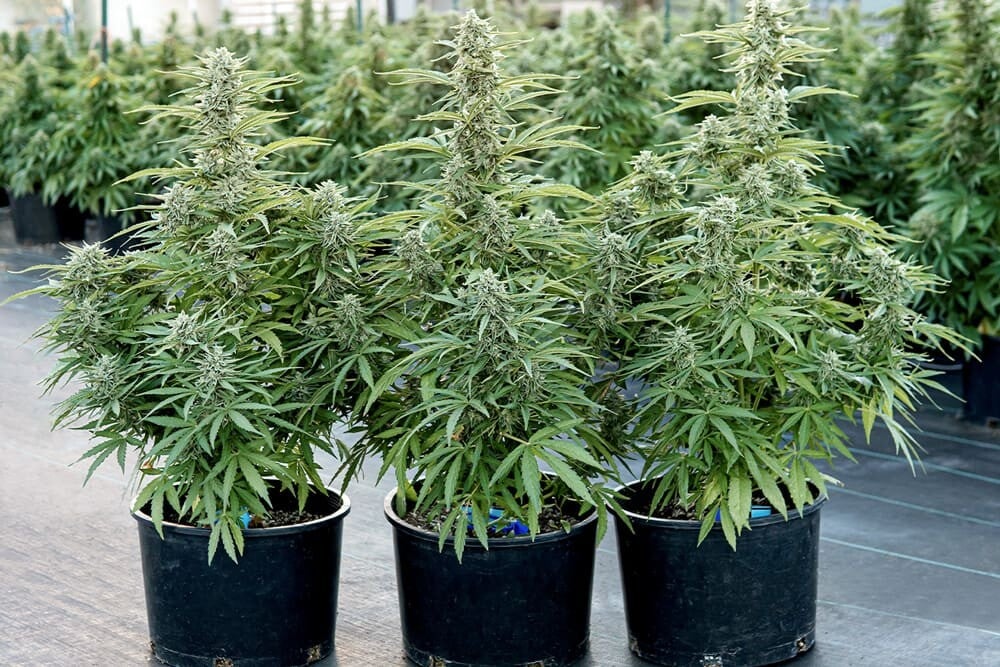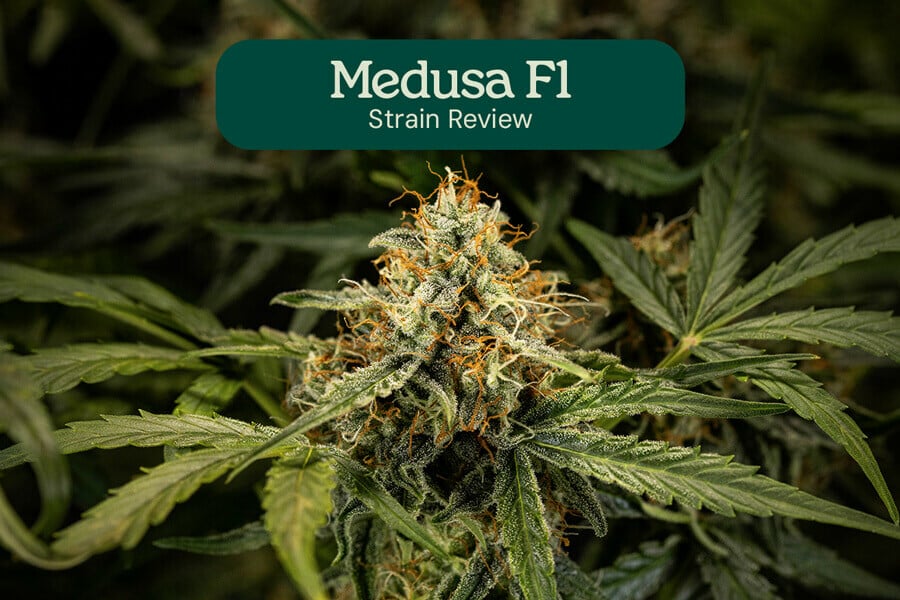.

Cannabis Conversations: CRIC Labs Trials Medusa F1 & Orion F1 Autoflowers
In this edition of Cannabis Conversations, our master grower Max explores the performance of Medusa F1 and Orion F1 at CRIC Labs, a leading research facility in Montreal. Discover how our F1 cannabis genetics thrived in a controlled, high-tech environment, delivering uniform growth, impressive speed, and recording-breaking yields of 1800 g/m².
Contents:
- Setting the scene: cric labs cannabis r&d in montreal
- Meet the team: simon on cannabis research at cric labs
- Inside the grow rooms: f1 autoflowers on trial
- Lighting & climate control for orion f1 auto and medusa f1
- Cannabis trial results: yield, speed, and consistency
- Smell, strength & structure of f1 autoflowers
- Advanced techniques: topping and flushing orion f1 auto
- From trial to garden: f1 autoflowers made for home growers
- Sops, consistency, and the power of f1s
- The future of cannabis research and f1s
Since creating the very first true F1 cannabis hybrids and releasing them to the world, our revolutionary genetics have ended up in all kinds of places. They’ve sprouted up in grow rooms and gardens in America, Europe, and beyond, and commercial operations such as the Bioleaf Health facility in Portugal.
Now, two of our legendary F1 varieties have emerged in CRIC Labs Inc, a cutting-edge research and development operation in Montreal, Canada. As part of our Cannabis Conversations series, we sent our master grower Max across the Atlantic to go and see firsthand exactly how and why CRIC Labs is growing our F1 genetics.
Continue reading for a sneak peek into one of the most professional growing rooms in the world, and discover how Medusa F1 and Orion F1 are getting on in such a carefully engineered environment.
Setting the Scene: CRIC Labs Cannabis R&D in Montreal


Max arrived at the CRIC Labs facility in the middle of the harsh Canadian winter. As he left his car and approached the building, the snow crunched under his feet and continued to flurry down from the gloomy sky. While it may not seem an ideal time of year to grow cannabis, the team at CRIC Labs has come up with a solution to year-round cultivation.
As a leading horticultural research and development facility, CRIC Labs conducts trials on a range of crop varieties, including cucumbers, peppers, strawberries, and, of course, cannabis!
Boasting state-of-the-art lighting, climate control, hygiene, and fertigation technology, CRIC Labs serves as the perfect location for seed companies to test and develop their varieties. The consistent environment controls all variables, providing insights into crop uniformity and productivity.
With this in mind, we were more than excited to see how two of our F1 cannabis hybrids performed in such an environment. With Max on the ground, it was time to find out!
Meet the Team: Simon on Cannabis Research at CRIC Labs


After being welcomed into the facility, Max sat down with team member Simon to find out more about his role. Speaking on his position at CRIC Labs, Simon explained: “I oversee operations. I start from the beginning with the customer to design a research project. Then, we run with it and I make sure that the team is on point there, doing the daily measurements, the photographs, all the data collection that we do, and I also work on the software platforms.”
After detailing his role at CRIC Labs, Simon invited Max to step into the growing space and see the developing plants and cultivation setup for himself.
Inside the Grow Rooms: F1 Autoflowers on Trial
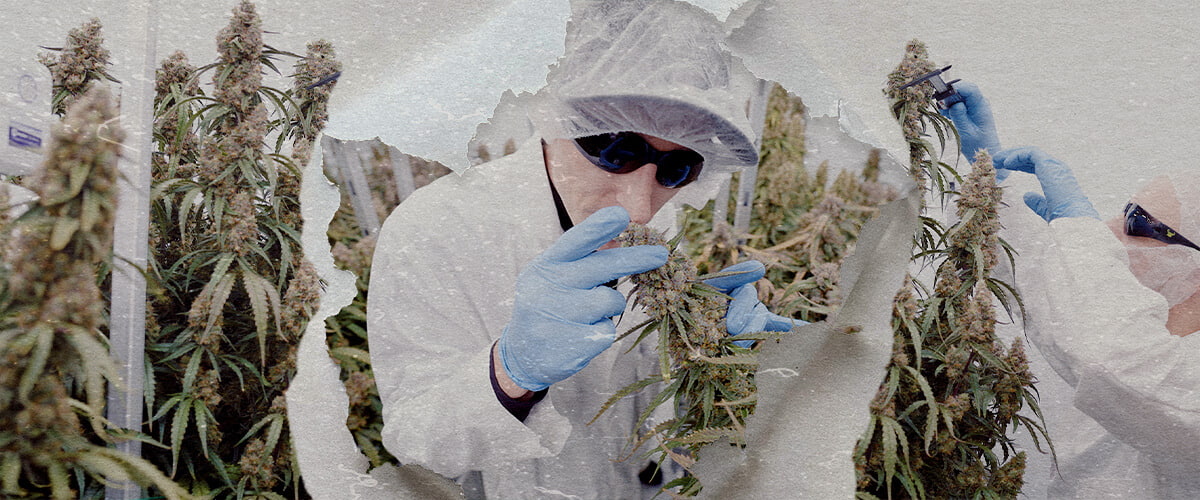
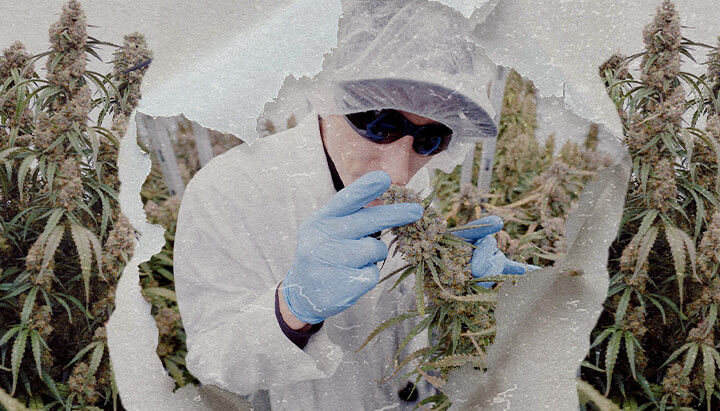
Even before stepping over the threshold, CRIC Labs' professionalism shone through with their hygiene standards. Both Simon and Max donned white lab coats and hair nets and washed their hands thoroughly. Then, Simon took Max into the back room, a bright and spotless location filled with pipes, valves, and tanks.
Impressed at the sight, Max expressed: “There is absolutely nothing to say about that place except that it looks like a Ferrari. That’s all I can tell. Everything is marked. You’ve got stop and go everywhere. Wow, that’s a great job.”
Next up, Simon brought Max into the growing space. Here, Max encountered a room packed with stout, healthy, trichome-covered plants that were deep into the flowering stage. As they made their way around the gorgeous specimens, Max fired away some key questions to understand more about the operation and the genetics in action.
Lighting & Climate Control for Orion F1 Auto and Medusa F1


In such a bright room, Max was curious to know about the PPFD facilitating such luscious growth. “So, we did a couple of trials here for that point especially. It started from 600–1000 μmol to find a sweet spot because we have to understand we’re giving them 18 hours of light,” Simon replied. “We ended up with the sweet spot being 1000.”
Simon went on to add that the lighting situation works so effectively because of the uniformity of the F1 hybrids, stating: “It was super easy for us to keep the light at the same level for each plant because they were mostly growing to the same height.”
As the pair continued walking around the room, Max noticed sensors amongst the canopy, which Simon confirmed were used to constantly monitor humidity, temperature, and CO₂ levels.
Unlike the case in many grow rooms, these beautiful specimens don’t sit in soil. Instead, their roots grow down into cubes of inert growing medium and are nourished through precise fertigation.
Cannabis Trial Results: Yield, Speed, and Consistency
Curious as to how Simon and the team at CRIC Labs viewed the differences between the two F1 varieties, Max asked: “What is your impression about Orion and Medusa, like the plants we have running in this place? Are they very different? Are they similar? Do they behave kind of the same?”
Simon replied: “They have small differences, but, for the most part, behave the same. It’s the trimming quality at the end that’s a little different but both are super easy… It’s mostly a matter of taste.”
Max also asked Simon what he thought of the crops in terms of speed. Appearing impressed, Simon replied: “We can make a crop in a couple of weeks shorter than the regular plants, so that’s handy for rolling more research projects one after the other.” He added: “It’s fewer steps. You plant the seed and only have to transplant once.”
Surrounded by giant ripe colas, Max asked: “You’re telling me that this plant 60 days ago, maybe 69 days ago, were seeds?” Simon replied: “Yep. Those are 69 days old today.”
Growing these superb genetics under such tightly controlled conditions, Simon revealed that the team was managing to consistently produce a staggering 1800 g/m².
Smell, Strength & Structure of F1 Autoflowers
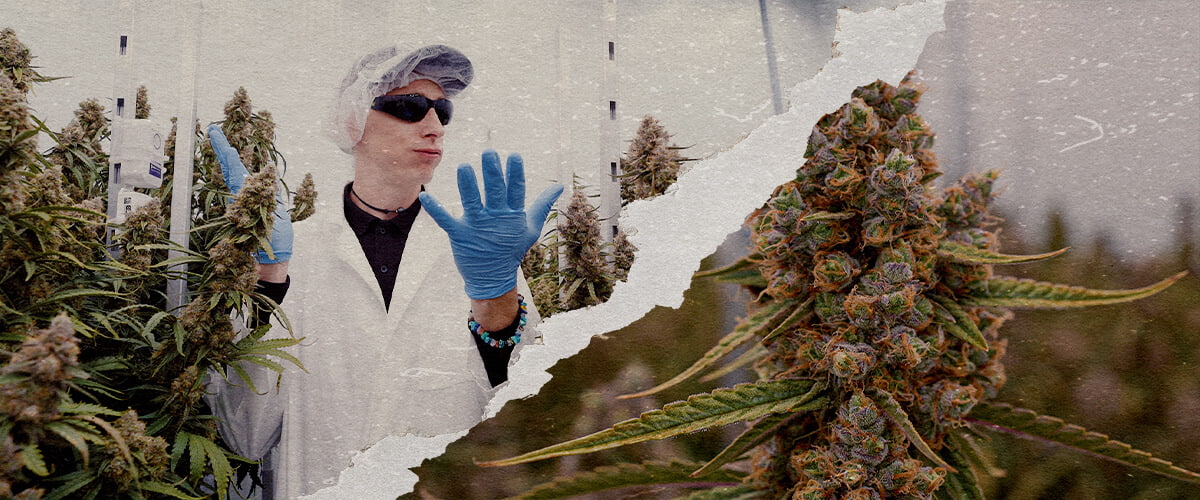
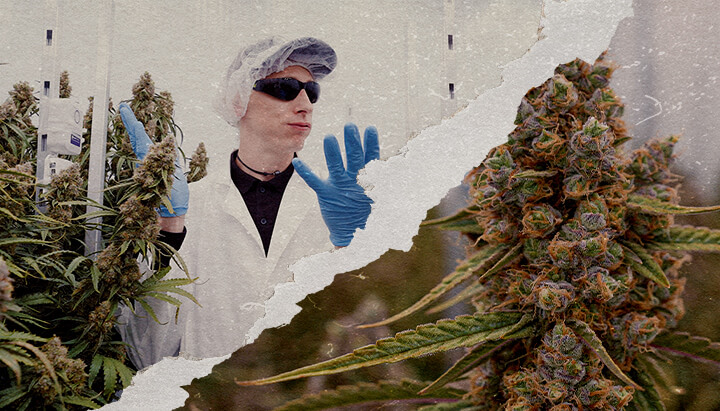
If you’ve grown Orion F1, Medusa F1, or both of these varieties, you’ll have a good idea of how potent their terpene profiles are. The team at CRIC Labs learned this firsthand when their stench triggered an emergency.
Orion F1
|
|
Blue Mammoth Auto x Blue Dream x Amnesia |
|
|
35 - 40 days |
|
|
THC: Very high |
|
|
Calming, Physically Relaxing, Stoned |
|
|
65 - 70 days after germination |
Sitting with Simon outside of the growing space, Max noted that despite being behind a screen of glass, the smell of the plants still filled the facility. Simon emphasized this, sharing that the smell had gotten so potent that it triggered a gas sensor. “Yeah, that’s part of building a new lab. You have to adjust a few things and at some point we had the sensors kicking off.”
Back in the grow room, Max stood awe-struck before the plants, noting the incredible trichome density on the buds of each variety, a visual indicator of their potency. Although usually talkative, Max stated: “Impressive. That’s just impressive. I usually always say something, but today this just makes me quiet.”
Simon went on to discuss the structure of the two F1 varieties, touching on their natural shape, which needs minimal management. "There's no training whatsoever with those plants… We like them because they’re sturdy… The stem is super, super big. They’re tall, but not too tall, so they kind of hold themselves. It’s almost like ScrOG, but they kind of do it by themselves.”
Advanced Techniques: Topping and Flushing Orion F1 Auto
Despite leaving their plants untrained, Simon explained that they had experimented with topping both F1 varieties at the facility. While conventional wisdom suggests never to top autos because they have little time to recover, the team at CRIC Labs found that F1 hybrids tolerate this form of high-stress training with ease.
Simon explained: “Those are assumptions people have that we knew about as well. So, topping F1 hybrids like that; how is the plant really going to behave when you know and control all of the growth parameters?... The difference was minimal without sacrificing or stressing the plant.”
Next, Max switched gears to talk about flushing, asking: “Do you lower your EC at the end? Or do you just push them?” Simon replied: “We give them a little flush. Not a super long one, just a week.” Max asked if the team saw any response in the plants after this procedure, to which Simon replied: “You see the leaves, of course, getting yellow.”
From Trial to Garden: F1 Autoflowers Made for Home Growers
While CRIC Labs cultivates F1 hybrids in an extremely clean and controlled growing space, Max was keen to see how this method could translate to home growers. Referencing the massive yields they’re achieving, Max asked: “Do you think this is doable to reach that level at home?”
Simon answered: “So, at the small scale with a grower that is a bit knowledgeable about the plant and its environment, I think it’s totally achievable; 1000 μmol is not any extreme.”
“And what is the average EC you’d recommend for those guys?”, asked Max. “They can go fairly high, but it can go like 2.5–3.3,” Simon replied, adding: “As long as the plant is happy and fast-growing, it’s not too many nutrients for them.”
SOPs, Consistency, and the Power of F1s
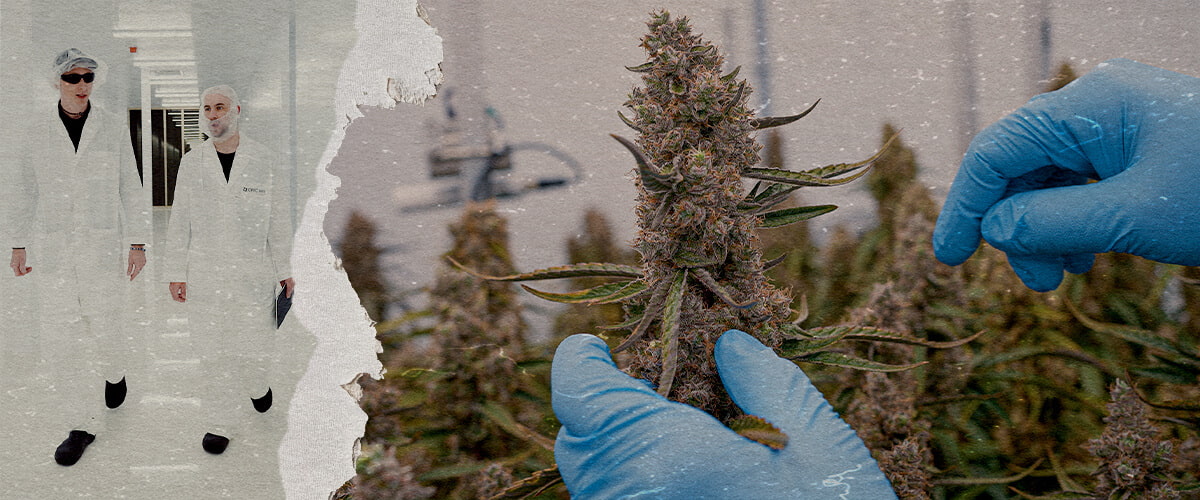
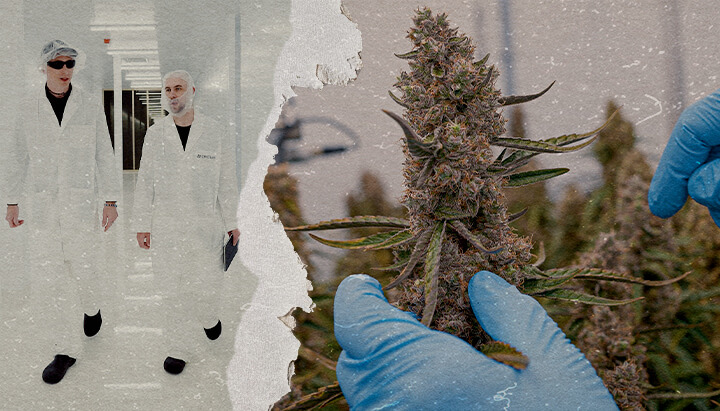
The research and development trials at CRIC Labs have shown yet again how uniform and consistent F1 hybrids are. Under optimal conditions, they serve as the perfect solution for both home growers and commercial cultivators to develop a seamless standard operating procedure (SOP). Their reliable and predictable size, shape, potency, flavor, and speed make them an easier and more cost-effective option than clones.
The Future of Cannabis Research and F1s
CRIC Labs pushed both Medusa F1 and Orion F1 close to their limits, yielding massive harvests under conditions that home growers are able to cultivate. Max’s useful questions during this edition of Cannabis Conversions unveiled that F1 hybrids really prove their worth in an advanced research and development environment. Going forward, we’re excited to see CRIC Labs and other teams continue to experiment with our different strains to uncover their full potential.
Medusa F1
|
|
Sugar Magnolia x American Beauty |
|
|
40 - 45 days |
|
|
THC: Very high |
|
|
Balanced, Creative, Physically Relaxing, Sleepy |
|
|
70 - 75 days after germination |






























